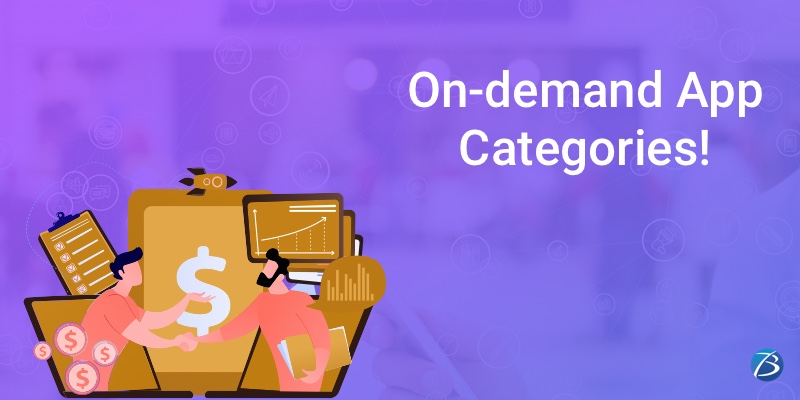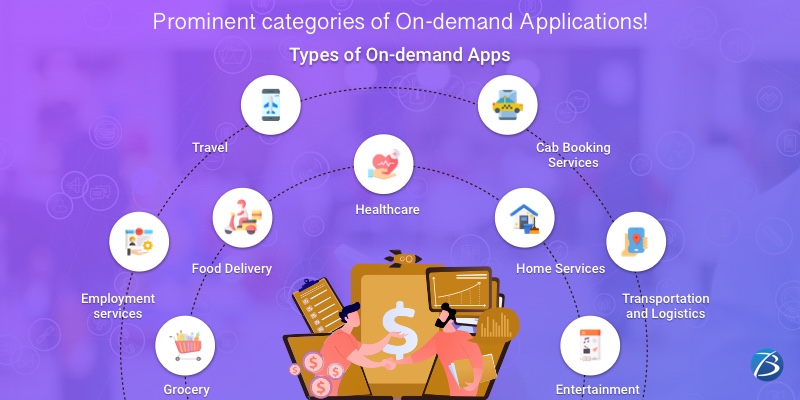
In today’s era of digitalization, consumers are accustomed to receiving instant solutions to anything and everything at their fingertips. This customer expectation is perfectly fulfilled by On-demand app solutions. As the name indicates, on-demand apps enable customers to receive services/ products at their desired location as and when they demand; with just a few clicks on the smartphones.
Such services are immensely advantageous to customers and providers owing to the following reasons:
- Instant access to smart search, suitable payment methodologies, and real-time tracking
- Prompt delivery leading to customer satisfaction
- A budget-friendly option for consumers and providers unanimously
- Higher revenue generation for businesses and scope for scaling up their operations
No wonder such apps have gained a lot of traction within a short period and are predicted to rule the roost in the coming years.
On-demand app development possesses a huge market potential and has a lot to offer to aspiring entrepreneurs. So, this write-up outlines the various on-demand app models as well as the major app categories that have disrupted the mobile app industry. A quick read will provide useful insights to businesses that plan to invest in on-demand app creation.
On-demand App: Business Models
B2B: Business to Business
This business model is used when a business seeks services or products from another business enterprise. B2B apps connect various businesses via mobile platforms and support transactions across the globe. B2B apps are categorized into two segments: Vertical and Horizontal. “Vertical” refers to serving a single industrial domain whereas “Horizontal” refers to serving manifold industrial sectors. Some of the prominent B2B apps include Cargomatic, Catalant, Eventio, Flipkart, Amazon, UrbanClap, and Walmart.
B2C: Business to Consumer
The app solutions catering to this business model help a business to digitally connect to their customers. B2C solutions enable the end-users to either buy products or avail of services directly from a business enterprise. Dominos, Starbucks, Amway, Nike, are some notable examples of this model.
C2C: Consumer to Consumer
C2C apps allow users to sell or buy goods/services from other users. Such apps provide equal rights to all the users and none of them are regarded as entrepreneurs. For example, the BlaBlaCar app enables users to fetch as well as offer rides to co-travelers. These platforms provide ride details like arrival/departure points and travel dates – to persons who wish to book a seat. Other popular C2C app solutions are AirBnB, OLX, Uber, eBay, etc.
Major Types of On-demand Apps

Grocery
Grocery delivery services via on-demand mobile apps are currently one of the most preferred and widely used services. This is because such apps eliminate the need for paying a visit to the grocery store and waiting in long queues, for buying daily necessities. Consumers simply have to tap on their mobile handsets to select the necessary items, add them into the cart, make the payment using secure in-app options, and the groceries reach your doorstep within a few hours.
Food Delivery
Food delivery apps allow consumers to effortlessly taste different delicacies from a wide range of eateries right from the comfort of their living rooms. Such an application displays all available food joints within the users’ vicinity. The users can then select the restaurant/s of their choice, the food items they wish to order as well as the desired customization details. Once the payment is executed, the eatery confirms the order and provides home delivery. These apps operate within a particular radius and levy delivery charges based on the bulkiness of the order. Besides, such apps fetch more orders for food providers and help them to widen their customer base. Uber Eats, Grubhub, Doordash, and Instacart are some examples of successful food delivery apps.
Healthcare
On-demand medical apps elevate the convenience quotient by instantly connecting patients with practitioners and providing round-the-clock services. mHealth apps like doc-on-demand, not only enables patients to book doctor appointments via smartphone devices but also provide an in-person-like online healthcare consultation experience, including medical examinations as well as recommendations from physicians. Apart from telemedicine apps, the healthcare on-demand sector also offers medicine delivery services those drop-ship medicines directly to the customers’ doorstep. PharmEasy NowRx, Practo, 1mg, and Myra are some noteworthy examples.
Home Services
Finding reliable home services for tasks such as plumbing, electrical issues, pest control, furniture repair, house cleaning, etc. has always been a difficult task as such services aren’t easily available. However, the advent of home services apps have successfully addressed this pain area encountered by consumers and has benefitted providers too. Individuals, as well as commercial service providers, enroll themselves in this marketplace for generating leads. Furthermore, the app provides the location of the home/office seeking services, tracking options, and review features to facilitate service delivery. TaskRabbit, Homejoy, Handy, Slate, UrbanClap, and Merry Maids are some popular examples of this niche.
Entertainment
Entertainment apps like Amazon Prime, Spotify, and Netflix, complement the changing behavior of the consumers of the entertainment industry. Thanks to such apps, viewers can now watch movies/shows, listen to music, on these OTT platforms, and indulge in gaming sessions regardless of the hour and location. Furthermore, one can tune in to programs broadcasted from any corner of the world and watch an entire season at one go instead of having to wait for the next episode. As such, this approach proves to be convenient and offers value for money.
Employment services
The modern job industry is teeming with professionals who prefer flexible/freelancing jobs over the conventional company culture and are interested in short-duration projects. Such job seekers use on-demand employment apps to connect to the providers and find the specific type of job offers they are looking for.
Travel
On-demand travel apps have become a handy travel companion for all new-age travelers. This is because such apps have simplified complex tasks like finding and locating tourist spots, booking hotels, renting car services, etc. Travelers utilize applications such as HotelToday, and Airbnb to acquire information and avail of essential services using their smartphones.
Cab Booking Services
Taxi-booking apps like Uber, Flywheel Taxi, Juno, Lyft, etc. come with the following offerings:
- Booking a ride by providing the pick-up location and the desired destination.
- Tracking the driver’s location through GPS-enabled maps/navigators.
- Interaction with the driver using in-app communication channels to enquire about the arrival time, while awaiting the cab’s arrival.
- Feedback systems concerning behavior and services via ratings, for both customers and drivers.
Transportation and Logistics
Apps like Uber Freight and UberDELIVER allow the safe delivery of parcels and the transportation of freights to any location, at any time. Such solutions come with advanced features such as real-time tracking, speedy payment, in-app messaging to facilitate communication between customers and suppliers and offer transparent pricing.
Concluding Thoughts:
On-demand apps empower customers to obtain access to their necessities at their fingertips and hence have garnered unparalleled popularity amongst the masses across the globe. Therefore, investing in on-demand app development will make way for a quantum leap in terms of business growth as well as profitability.
If you have architected a fully functional on-demand app, do not forget to share your experiences in the comments section below.
